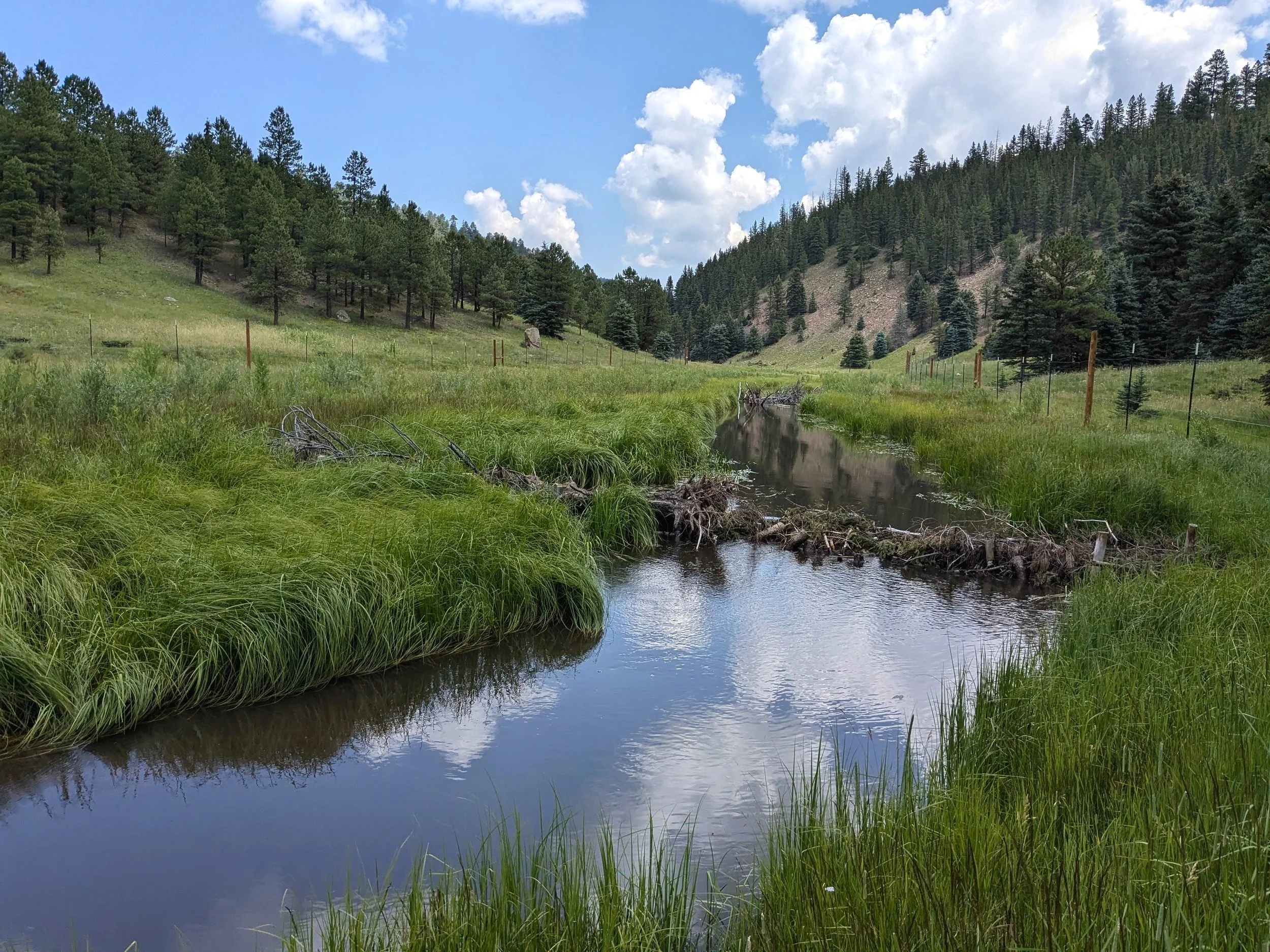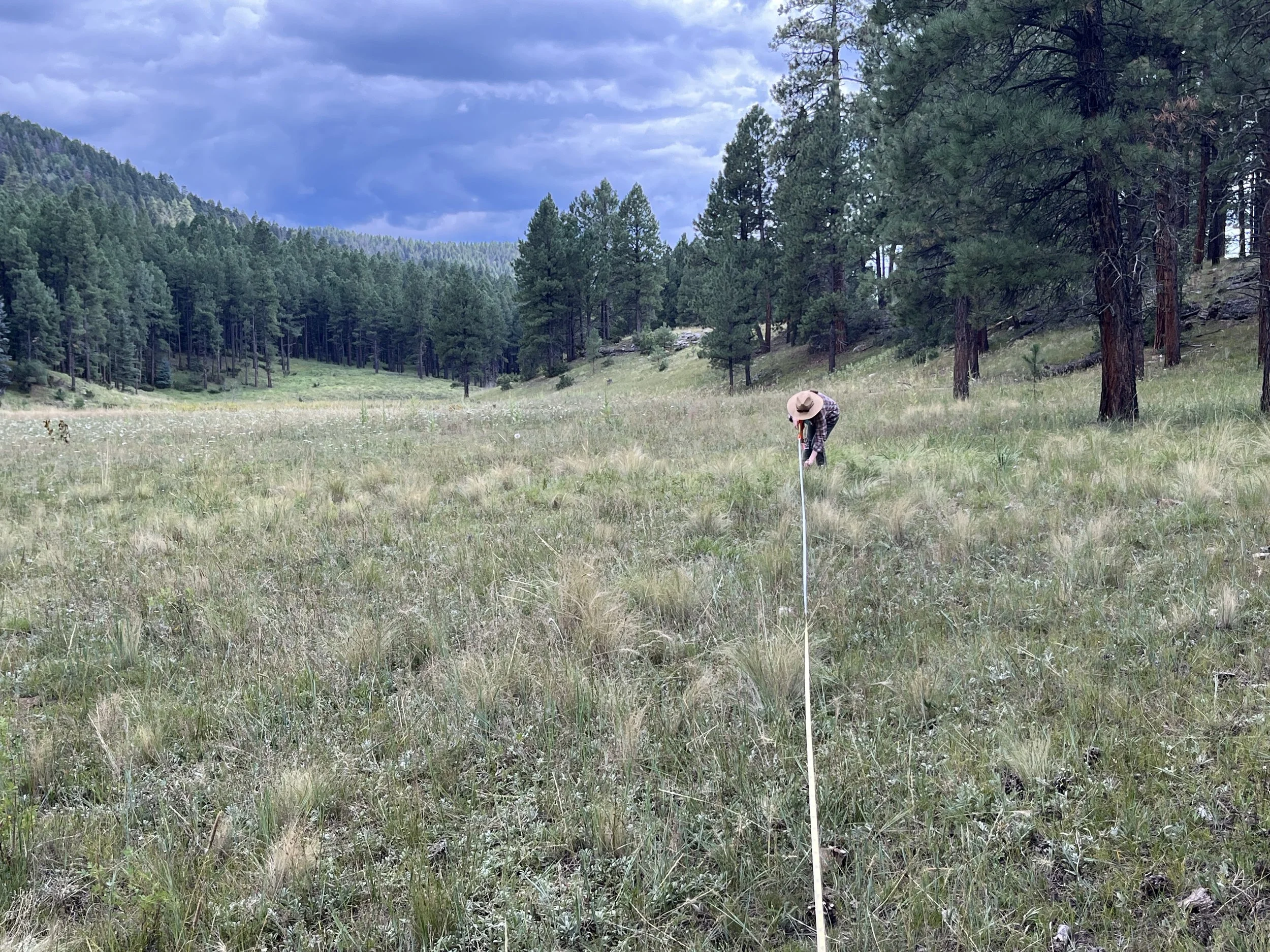Background
Lush areas along streams and rivers—called riparian areas—are some of the most important parts of the landscape. They help keep water clean, support wildlife, and hold more moisture and healthy soil than the drier land around them. These areas can also provide valuable water and forage for livestock, especially during drought. With good management, riparian areas boost both land health and ranching resilience.
The Challenge: Knowledge Gaps
While it’s well known that riparian areas provide vital benefits—like clean water, wildlife habitat, and forage—we still don’t fully understand how restoration practices affect these systems, especially in semi-arid rangelands. In particular, there's limited research on how low-tech, in-stream structures that mimic beaver dams influence soil health and related ecosystem services. Soil carbon is a key indicator of soil health, tied to water-holding capacity, plant productivity, and long-term drought resilience. But we don’t yet know how it changes across different parts of the riparian zone in response to these interventions.
The Opportunity: Large Impacts
Many riparian areas across the western and central U.S. are in poor condition due to historic degradation and altered water flows. That means they offer significant potential for recovery. Beaver-inspired in-stream structures—designed to slow water, spread it across the floodplain, and support vegetation—could improve soil health, recharge groundwater, and create more reliable water and forage resources for ranchers, even during drought. By studying how these practices affect soil function, we can better guide restoration that supports both ecological and agricultural resilience.
The Project
WLC is teaming up with the Lein Lab at the University of Arizona and Rio Grande Return to quantify ecosystem service benefits of low-tech process based restoration.
Restoration Techniques
Beaver Dam Analogues (BDA) and Post Assisted Log Structures (PALS) are low-tech riverscape restoration techniques that kickstart natural processes (beaver dam structures and woody accumulation).
These structures slow the flow of streams, reconnecting floodplains and filling in damage from erosion.
Photo from Rio Grande Return
Soil Health
WLC is researching changes in soil carbon storage in restored riparian areas. This work will involve field sampling of soils in degraded and restored riparian areas across AZ, NM, and UT, lab work to analyze sequestration rates associated with restoration, and analysis and reporting of results.
Project Updates
Summer 2024
Boots are on the ground in New Mexico! Dr. Kendall Beals, our project lead, has been to New Mexico three times this summer for preliminary scouting trips, setting up transects, and the first round of sampling! She spent the summer honing in on the experimental design of the project: where to sample, how many samples, what to measure, and how to analyze data. With a sound experimental design, Kendall will analyze soil carbon along streams in varying states of restoration. Her study will explore how quickly soils along restored streams can build the organic matter that supports drought resilience. She’ll examine whether low-tech restoration techniques—like beaver-inspired in-stream structures—help riparian areas retain more water, improve soil health, and become more resilient in dry conditions. The research will also examine whether certain parts of the riparian zone act as “hotspots” for soil function and moisture retention.
We have some big questions to answer! Check back in for more updates about this project.






